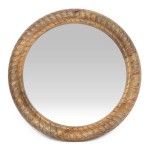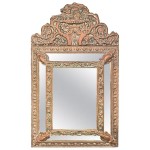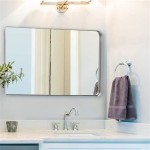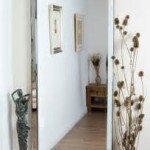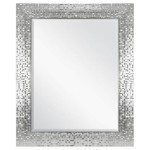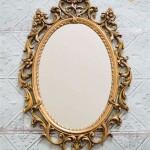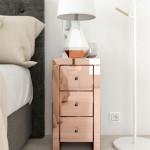How to Make a Wooden Framed Mirror
Creating a custom-framed mirror offers a unique way to personalize home decor. This process involves several key steps, from selecting the appropriate materials to assembling and finishing the frame. This guide outlines the process in detail, providing a comprehensive overview for crafting a high-quality, wooden framed mirror.
Materials and Tools Required:
The initial step involves gathering the necessary materials and tools. These include a mirror, wooden boards for the frame, wood glue, measuring tape, a saw (miter saw recommended for angled cuts), clamps, sandpaper, wood filler (optional), finishing supplies (e.g., paint, stain, varnish), safety glasses, and a pencil.
Mirror Selection and Measurement:
Careful selection of the mirror is crucial. Consider the desired size and shape, ensuring it fits the intended space. Accurate measurements of the mirror's dimensions are paramount for determining the frame's dimensions.
Wood Selection and Preparation:
Choosing the right wood impacts the frame's aesthetics and durability. Hardwoods like oak or maple offer durability, while softer woods like pine are easier to work with. The wood should be free of knots and warps. The width and thickness of the boards depend on the desired frame profile. Planing the wood to a uniform thickness ensures a level frame surface.
Cutting the Frame Pieces:
Precise cutting is fundamental for a well-fitted frame. The length of each frame piece should equal the corresponding mirror edge, plus twice the desired frame width. A miter saw allows for accurate 45-degree angle cuts, essential for creating neat corners. A miter box and hand saw can be used as an alternative, but require more skill and precision.
Assembling the Frame:
Apply wood glue to the mitered edges of the frame pieces. Join the pieces, ensuring tight corners. Clamps are essential for holding the frame together while the glue dries. Follow the glue manufacturer's instructions for drying time. Wipe away excess glue promptly to prevent staining the wood.
Frame Reinforcement (Optional):
For larger mirrors or heavier frames, adding reinforcement can increase stability. This can involve using corner braces, L-brackets, or wood splines inserted into slots cut into the mitered joints. These reinforcements are typically applied to the back of the frame.
Sanding and Filling:
Once the glue is dry, sand the frame to smooth any rough edges and create a uniform surface. Start with a coarser grit sandpaper and gradually move to finer grits. Wood filler can be used to fill any gaps or imperfections. Allow the filler to dry completely before sanding it smooth.
Finishing the Frame:
The finishing process protects the wood and enhances its appearance. Options include painting, staining, or applying varnish. Before applying the finish, ensure the frame is clean and free of dust. Multiple coats may be required, allowing sufficient drying time between each coat. Lightly sanding between coats can further enhance the smoothness of the finish.
Attaching the Mirror to the Frame:
Several methods exist for attaching the mirror to the frame. Mirror clips, which screw into the frame and grip the mirror edges, are a common option. Alternatively, a strong adhesive specifically designed for mirrors can be used. Ensure the adhesive is compatible with both the mirror and the frame material. Follow the adhesive manufacturer's instructions for application and drying time.
Hanging Hardware Installation:
The final step involves installing hanging hardware on the back of the frame. D-rings or wire hangers are commonly used. Consider the weight of the mirror and frame when selecting appropriate hardware. Ensure the hardware is securely attached to the frame and positioned to distribute the weight evenly.
Safety Precautions:
Throughout the entire process, prioritize safety. Wear safety glasses when cutting, sanding, or working with power tools. Work in a well-ventilated area when using finishes or adhesives. Follow all manufacturer instructions for tools and materials. Proper handling and disposal of materials are essential for maintaining a safe working environment.

Diy Farmhouse Wood Frame Mirror She Gave It A Go

Diy Wood Framed Bathroom Mirror Christina Maria Blog

Diy Farmhouse Wood Frame Mirror She Gave It A Go

Diy Framed Mirror Jaime Costiglio

Diy Rustic Wood Frame Mirror Amanda Katherine

How To Make A Simple Mirror Frame With Wood Upgrade An Old

Framed Floor Mirror Love Grows Wild

Diy Wood Framed Bathroom Mirror Christina Maria Blog

Diy Reclaimed Wood Frames The Space Between

How To Make A Simple Mirror Frame With Wood Upgrade An Old

